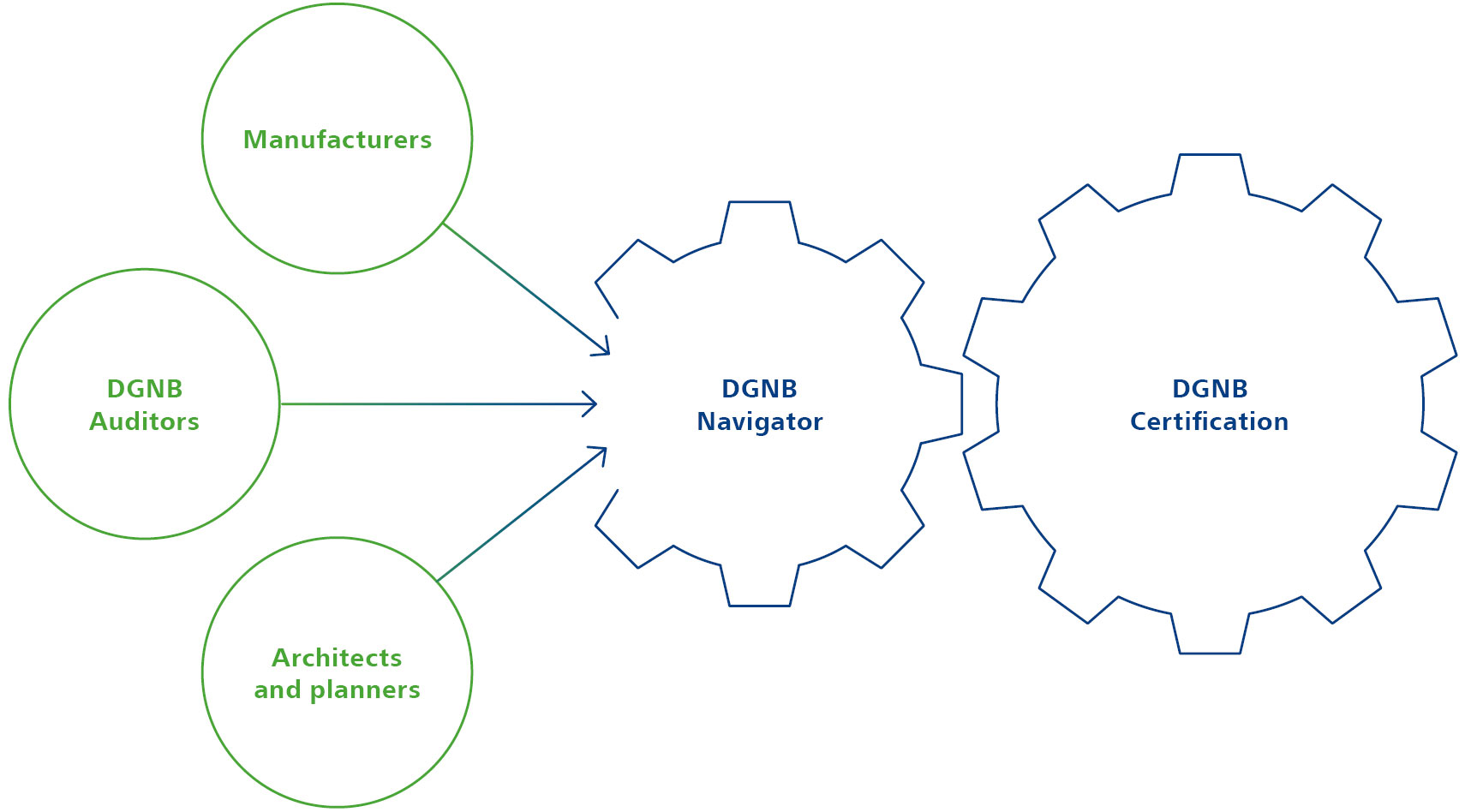Why the right choice matters
Choosing sustainable construction products plays a key role in achieving the climate action goals of the Paris Agreement. This is because, in addition to the operation of buildings, so-called grey emissions are already produced during the manufacture of the materials used. And throughout the further life cycle, greenhouse gas emissions are also caused by the replacement and recycling or disposal of the building materials used. In the course of the political, social and economic climate action debate, the focus is therefore increasingly on building products, their manufacture and the associated carbon emissions.
With regard to the choice of materials, it is not enough to pay attention to their carbon footprint alone. The question of reuse and recyclability is also important in order to save resources. Or the question of substances that could be harmful to health and the environment. It is also important to clarify whether a construction product has been manufactured according to standards that are socially and environmentally acceptable. These are questions that require rethinking on the part of the construction industry, as well as proactive requests from planners to the manufacturing companies. But even with all this relevant information about materials, it is still up to the planners to get it right. And that means selecting building materials in a way that contributes to a sustainable building.
The DGNB has published a report on the subject in order to provide more clarity on what is important when choosing sustainable materials:
Building Materials and Sustainability
Construction products in the DGNB System
The consideration of construction products in terms of sustainability is also one of the central themes of the DGNB Certification System. For around half of the DGNB certification criteria, construction products have an impact on the result and thus on the overall performance of a building. In order to be able to assess the influence of building products, the DGNB carries out a project-related assessment. This means that the certification system is designed to assess products in the context of the building, rather than focusing on the sustainability of individual products.
The DGNB distinguishes here between a direct influence and an indirect influence within the various criteria.
- Direct impact: Qualitative and quantitative features/properties of a concrete product within the construction context.
- Indirect impact: Planning-based services in relation to construction products (defining environmental requirements for construction products in the tender phase) or methods of resolution which can be implemented either through planning or also through the concrete product selection (for example, reducing potable water consumption through the greywater utilisation or water-saving fixtures).
Making the best choice with the DGNB Navigator
![Navigator broschure 2019 [Translate to English:] Eine Frau hält die geöffnete Brischüre zum DGNB Navigator in zwei Händen. Das foto ist von unten aufgenommen, sodass das Cover zu sehen ist.](/fileadmin/DGNB_eV/bilder_grafiken/bilder/navigator-broschuere-bau-2019-in-use.jpg)
In order to make informed decisions, all those involved in building need information on construction products and services that provides answers to these questions in a transparent, bundled and targeted manner. This is where the DGNB Navigator comes in. As a platform for construction products, the DGNB Navigator combines the information provided by manufacturers on product-specific sustainability aspects with the needs of planners. At the same time, it builds a bridge to DGNB certification.

In the DGNB Navigator, all relevant product data is provided by the manufacturer and checked for plausibility by the DGNB. Quality levels allow for a precisely tailored filtering process. In this way, products can be systematically compared and assessed from a sustainability perspective, for example with regard to harmful or hazardous substances, the carbon emissions associated with their manufacture or their recyclability. As the owner of the data, the manufacturer retains data sovereignty and is obliged to keep it up to date. With its certification area for auditors, the DGNB Navigator also provides the central platform for documenting the quality levels at building product level for the topics "Material ecology" (ENV1.2), "Responsible resource extraction" (ENV1.3), "Life cycle assessment" (ENV1.1) and "Circularity" (TEC1.6).
Awarding data transparency: the DGNB Navigator Label
![DGNB Navigator Label [Translate to English:] DGNB Navigator Label - Verleihung auf der BAU 2019](/fileadmin/DGNB_eV/bilder_grafiken/bilder/dgnb-navigator-label-verleihung.jpg)
The quality of such a database depends on the accuracy and completeness of the data provided. The DGNB Navigator ensures both by means of comprehensive data requests and a transparent presentation of the sources as well as topicality. The idea is to present all relevant data on the environmental impact of construction products in a transparent, comprehensive and reliable manner. The DGNB checks the plausibility and completeness of the data and the classification of the quality levels with regard to harmful and hazardous substances.
A construction product listed in the DGNB Navigator can also receive the DGNB Navigator Label if a product-specific Environmental Product Declaration (EPD) is available and the data query is complete, including the determination of all quality levels following a data comparison by the DGNB. With the DGNB Navigator Label, the manufacturer can document its commitment to sustainability and offer the necessary orientation and transparency to the demand side when selecting products.
Your contact
Email: navigator@dgnb.de
